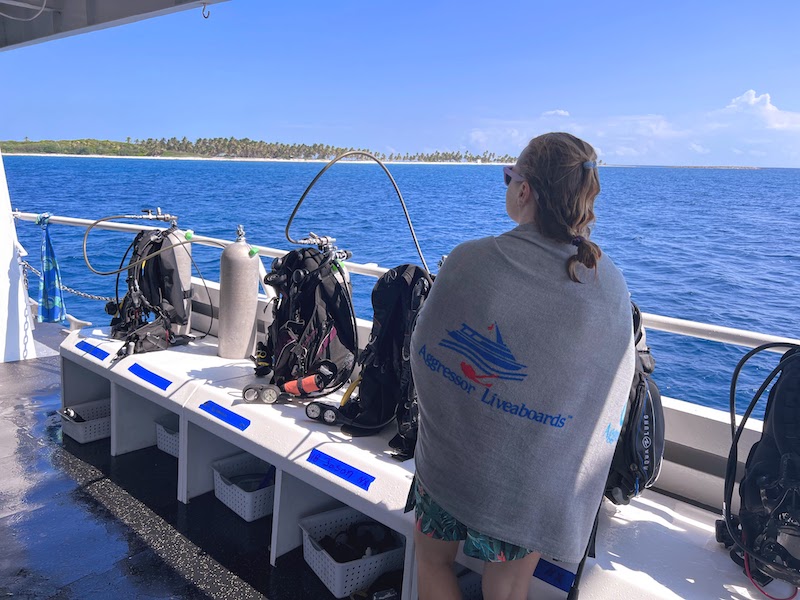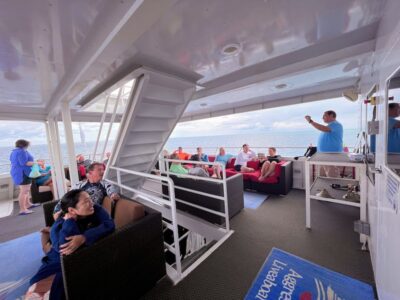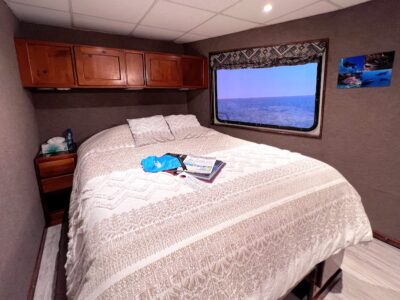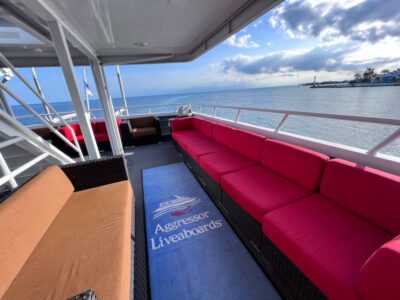I admit I was nervous. Up until my first scuba liveaboard I only had 33 dives under my belt. I didn’t even have a liveaboard on my radar until my husband mentioned it. I thought we were too inexperienced but he was still eager to try it. As luck would have it, I got the opportunity to learn about Aggressor Liveaboards at a travel writer’s conference, and the next thing I knew I was booked for a week of diving on the Belize Aggressor IV.
I was excited but still had a lot of questions about what my first scuba diving liveaboard trip would be like — Would I be able to keep up with the other divers? Would I get sick of scuba diving by the end of the trip? What’s it like to be on a boat with only 19 other passengers? Would the food be good?
I wasn’t able to find many good articles about what to expect on your first liveaboard, so I figured I might as well write one myself. My hope is that this article helps you understand what it’s like on an Aggressor Liveaboard trip so you can decide if it’s something you want to try.
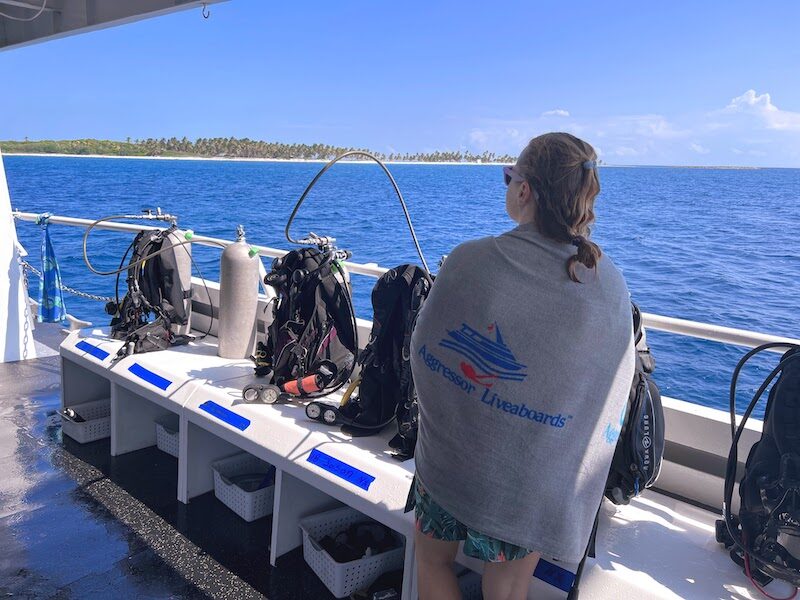
Thanks to Aggressor Adventures for hosting me on my first experience on a liveaboard scuba diving trip. All opinions are my own. This post may contain affiliate links. We are a participant in the Amazon Services LLC Associates Program, an affiliate advertising program designed to provide a means for us to earn fees by linking to Amazon.com and affiliated sites.
My First Scuba Diving Liveaboard Trip
I started diving in 2016, and up until this trip I had only done 33 dives around the Caribbean in places like Punta Cana, Cancun, Cozumel, Grand Cayman, and the Bahamas. My only other scuba-centric trip was in Bonaire, but that was still only 2 dives a day.
I first heard of Aggressor Adventures at a writer’s conference and as I learned more about the trips they offered, I got more and more excited. It sounded fantastic — a small group on a yacht doing up to 5 dives a day, with staff providing snacks and meals in between. Okay, I decided I could maybe get into the idea of going on scuba diving liveaboard.
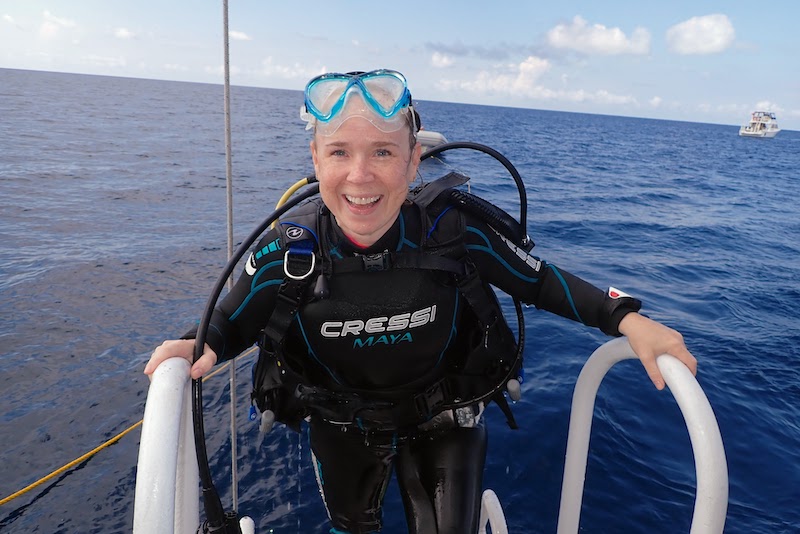
I booked my trip online through the Aggressor website and was also able to rent gear during the booking process (only tanks and weights are included in the price of the trip).
There are 2 boats that offer liveaboards in Belize — Belize Aggressor III and Belize Aggressor IV. We sailed on the larger Belize Aggressor IV.
The 2 Aggressor Liveaboard boats in Belize leave on Saturday evenings. We flew into Belize City on Saturday afternoon and were picked up at the airport and then transported to the boat (this is included in the price). You can’t get onto the boat until about 3 p.m. on Saturday so you’ll end up waiting for a bit once you arrive depending on your flight times.
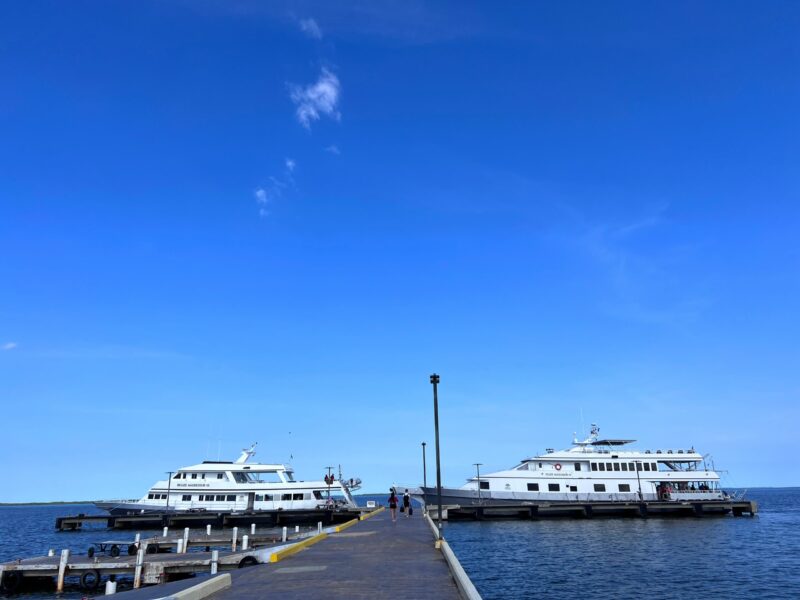
The Radisson Fort George Hotel across the street has a bar and restaurant and is where most guests wait to board the boats. We had lunch at the hotel and chatted with another couple who were sailing on Aggressor’s other boat for the week.
Then, after enjoying the best dive sites in Belize for the week, the ship docked back in Belize City on Friday afternoon. The rest of the day was open to explore or relax, and dinner was on your own that night. Most of us headed back to the Radisson to enjoy some Wi-Fi and then ordered pizza back on the boat for dinner.
We were transported back to the airport on Saturday morning.
How Much Experience Do You Need For a Scuba Diving Liveaboard?
One of my biggest fears was that only super extreme scuba fanatics would go on a liveaboard trip. While my husband and I were by far the least experienced divers there (most other divers on the boat had hundreds or even thousands of dives) I didn’t feel out of place at all. I felt like I had enough experience to keep up with the group and was able to learn a thing or 2 from the more experienced divers.
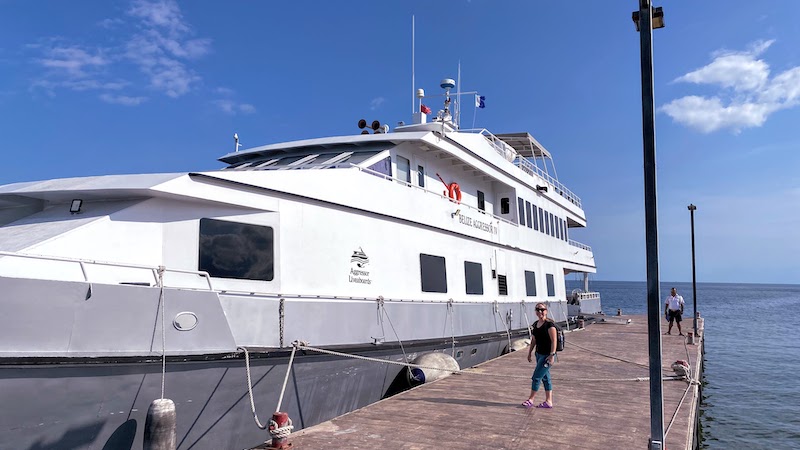
There was only 1 other diver on our boat who was a first-timer on a liveaboard trip. Everyone else had done multiple liveaboards and most of them had done multiple trips through Aggressor. There were even divers that had done over a dozen Aggressor liveaboards. Wow!
From my conversations with other divers as well as an Aggressor representative, I learned the dive destination may affect the experience level on the boat. The Bahamas liveaboards get more first-timers and less experienced divers overall than some other destinations. Of course, that’s purely anecdotal, but I thought it was an interesting observation.
Scuba Diving Liveaboard FAQs
What’s a Typical Day Like on an Aggressor Liveaboard?
You’ll do 3 things on an Aggressor Liveaboard trip — eat, sleep, and dive. Here’s what a typical day looked like:
- Breakfast
- Dive #1
- Snack
- Dive #2
- Lunch
- Dive #3
- Snack
- Dive #4
- Dinner
- Dive #5
Each day had a nice flow to it with plenty of opportunities to eat and rest a bit in between dives. If you’ve never done a scuba liveaboard before, 5 dives a day is a lot, but it’s doable.
Onboard there’s no pressure to complete all of the dives. You’re welcome to do them all or you can choose to sit some out. I ended up skipping about 4 dives during the week. If you do all of the dives on your Aggressor liveaboard trip, you’ll earn the Iron Diver award. If this is your first liveaboard, don’t feel like you need to achieve this. While I ended up only sitting out 4 dives, I really needed those additional times to rest. Only about 25% of the divers on my trip earned Iron Diver.
What’s Scuba Diving Like on a Liveaboard?
The thing I really liked about doing a scuba liveaboard with Aggressor versus just going on a typical 2-tank dive from a resort was that all your gear was already sorted out and waiting for you for each dive. All you had to do was put your gear on and jump in the water. It really made the actual experience of scuba diving as effortless as possible.
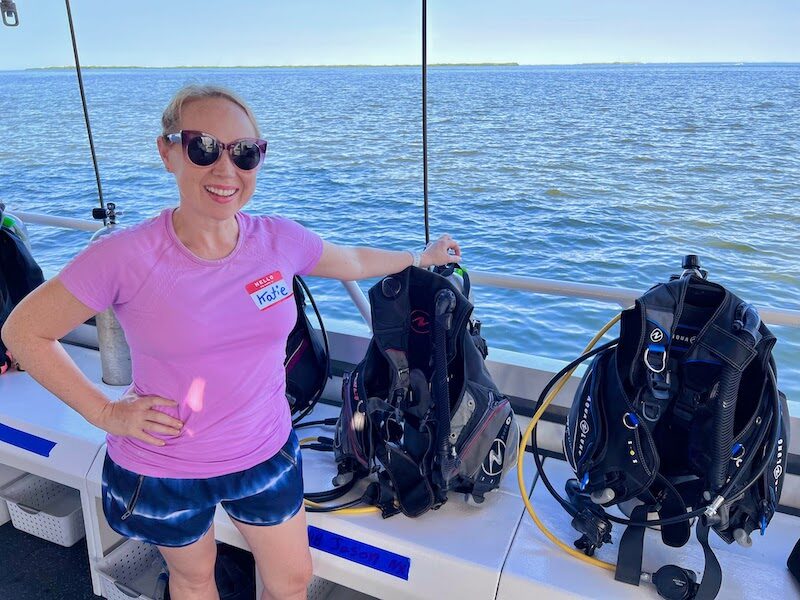
One of the best parts was that the staff would put your fins on and them off for you. It may sound a little pampered and bougie but it made a huge difference. If I never have to put my own fins on again, I’ll be a happy scuba diver.
The other nice thing is that there were 2 hot water showers right on the dive deck so you could rinse off and warm up as soon as you got your gear off. There was even shampoo provided if you wanted to totally clean off.
Before each new dive site (usually, we would hit 2 sites per day), the staff would do a quick briefing explaining the site and what we could expect. You could follow the guide or choose to go off on your own.
Even though I was less experienced than all of the other divers, I felt comfortable on all of the dives we did. There wasn’t anything overly complicated or technical about any of the dives. The only exception was the Blue Hole, which was the deepest dive I have ever done at around 130 feet. That one required a little more attention to time and ascension rate, but I was still able to complete it without a problem.
Do I Need To Use Nitrox On a Liveaboard?
If you haven’t gotten your Nitrox certification be sure to do it before your liveaboard trip. While it’s not required, it will help extend your bottom time and no decompression limits. That comes in handy when you’re diving multiple times a day for multiple days in a row. Every single diver on my trip was using Nitrox.
What Do You Do When You Aren’t Diving?
When you’re not diving you’re usually eating or sleeping. Between each dive, there were snacks available and then there was time to rest. You could relax in the outdoor lounge, enjoy the sundeck, chat with other guests in the dining room, or head to your room for a quick nap.
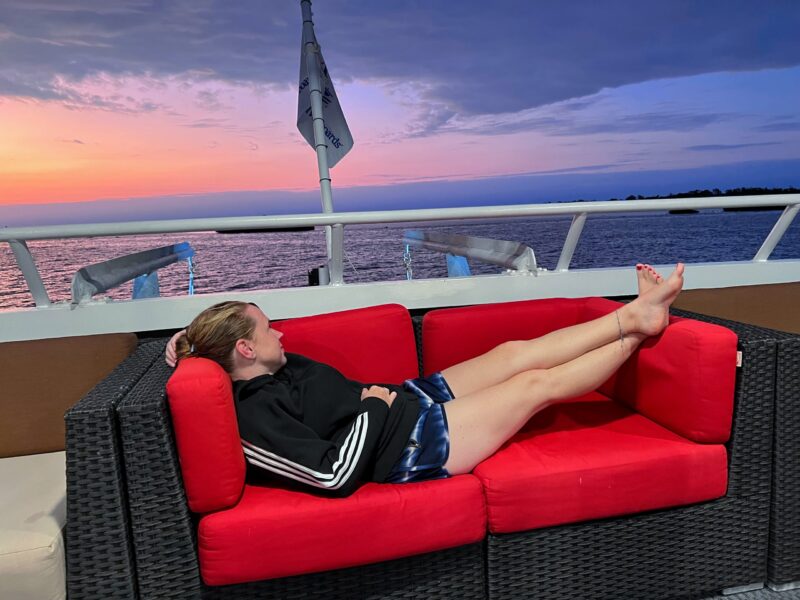
How Was The Food?
One of the biggest surprises was how good the food was! I figured it would be fine, and honestly, I wasn’t expecting much. It wasn’t fancy, gourmet fare so if you’re expecting that, you’ll be disappointed. However, every meal was delicious and I was always excited to see what our Chef, Carlos was making for us each day. You won’t go hungry on an Aggressor scuba liveaboard trip.
What About the Other Passengers?
One of the things that pleasantly surprised me is how well all of the passengers got along. It was an eclectic group of people that I really enjoyed getting to know. It made the dives feel like you were with friends, unlike a typical day trip dive where you’re with strangers. It was a benefit of doing a liveaboard that I didn’t expect at all. I’m still in touch with a number of people I met on my trip.
How Much Should You Tip a Liveaboard Crew?
The crew works hard all week and it’s customary to leave a tip at the end of your trip.
I spoke to a few past passengers as well as an Aggressor representative and discovered the suggested tip is 15%-20% of your cruise fare. This can be paid in cash or on a credit card.
How was the Belize Aggressor IV?
I sailed on the Belize Aggressor IV, one of the 20+ boats in the Aggressor fleet. This 138′ yacht held 20 passengers and 8 crew members.
The rooms were small (as expected) but comfortable. Ours had a queen-sized bed and a large window. The bathroom was tiny but got the job done. It’s not the kind of room I would choose for a luxury cruise, but for a scuba diving trip it was functional, and that’s all it really needed to be.
There was a dining room where we ate all of our meals, an outdoor lounge with comfy seating, and a sundeck with lounge chairs in addition to the dive deck where all of the scuba gear was stored.
Keep Reading: For more details about this boat, check out my full review of the Belize Aggressor IV.
What To Pack For Your First Scuba Diving Liveaboard Trip
Going on a scuba diving liveaboard trip requires a bit more planning than a week laying on the beach at a fancy resort. You can’t just pack a bathing suit and sunscreen and hope for the best. There are lots of essential items you’ll need to pack, and some of them aren’t obvious.
First, you’ll need something to wear while you’re actually diving. I wore a 3mm full wetsuit with a rashguard underneath. Some people opted for swim leggings or shorts and a rashguard. What you decide to wear is a personal preference, but make sure whatever you choose is appropriate for the water temperature in your dive destination.
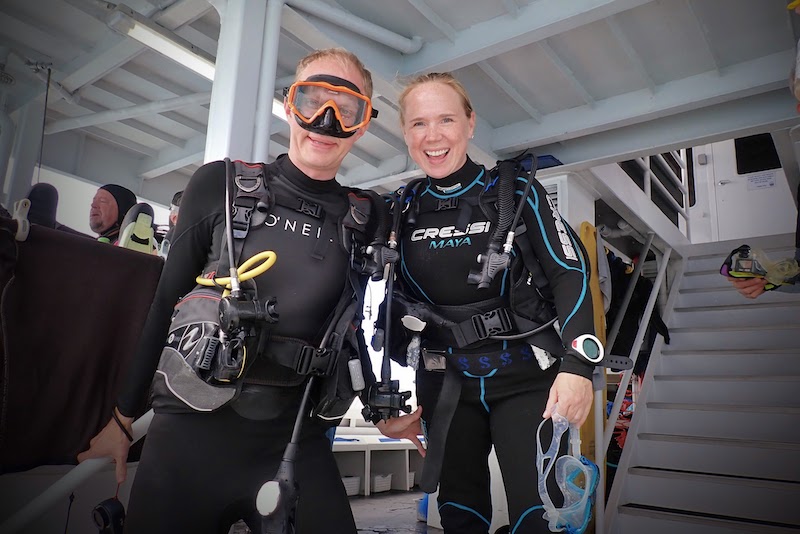
Another essential is scuba socks or booties. You’ll want these even if you’ve never used them before. They will help with warmth underwater but more importantly, they will protect your feet from cuts and scrapes you would most likely get from putting on and removing fins multiple times a day for a week.
An underwater camera is another great thing to bring. I was really impressed with the SeaLife smartphone housing that some other divers had on my trip. If you don’t want to invest in a big camera setup, this is a great way to be able to document your underwater adventures. I actually ended up buying one as soon as I got home.
If you’re going on a night dive, you’ll need a torch/underwater flashlight. However, I discovered that a flashlight can actually be handy during day dives too so this is something you definitely want to add to your scuba packing list.
A scuba hood is something I never would have thought to bring and I ended up wishing I had one. They help retain warmth (especially handy if you’re not diving in a full wetsuit) and can help protect your ears.
Bring eardrops even if you’ve never needed them on any other dive. You’ll be diving up to 5 times per day on a liveaboard so ear drops are essential. You can buy some or just make your own using a mixture of 50% alcohol and 50% vinegar. It’s not a bad idea to buy some first to get the bottle, which you can re-fill with your own solution when it’s empty.
You’ll need to dry out your clothes throughout the week, so bring some towel clips. Many of the seasoned liveaboard-ers (this should be a word) were using these to secure their clothes to the boat’s railings so they could dry without flying away.
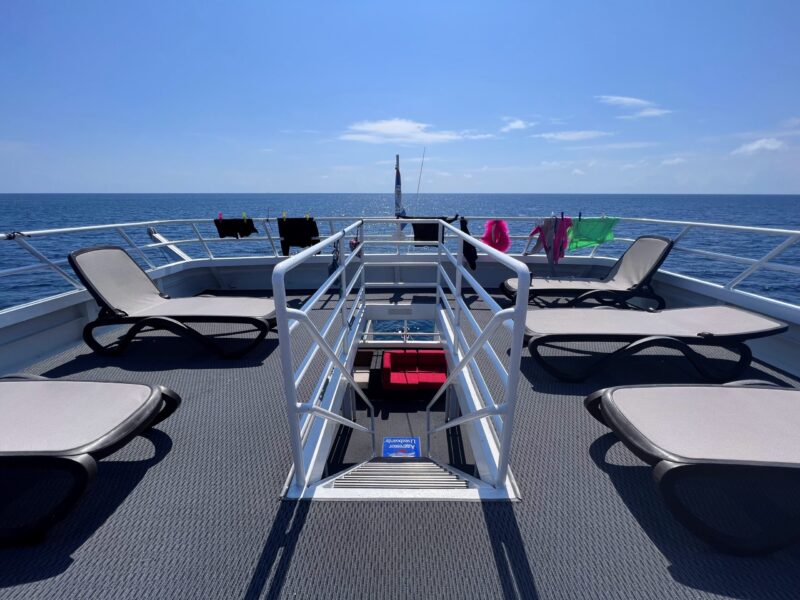
Finally, be sure to pack your toiletries in a hanging bag. There is very little counter space on a liveaboard boat and a hanging toiletry bag will help give you easy access to everything you need without cluttering your space.
Other items you’ll definitely want to bring are a mask, dive computer, and reef-safe sunscreen. Of course, if you own your own regulator, BCD, and fins, be sure to bring those, however, you can rent them through Aggressor so it’s not necessary to make the investment before your first scuba liveaboard trip
What I Didn’t Like About My Scuba Diving Liveaboard
I hope I am painting a realistic picture of what it’s like as a first-timer on a scuba diving liveaboard, so I wanted to share the things that I didn’t love in addition to what I thought was great.
My biggest problem with my liveaboard trip had nothing to do with diving. It was the fact that you’re totally cut off from the rest of the world. There is no Wi-Fi or cell service on the boat, and as someone with a young child, that was really difficult for me.
Aggressor liveaboard boats have an emergency phone if someone from home needs to contact you, but that’s different. I really missed being able to just send my daughter a quick text (something I was able to do even in remote spots like the Galápagos Islands and the Serengeti in Tanzania).
The other thing I didn’t like was that you can end up with a pretty big bill at the end of the week. While you pay for your cruise fare ahead of time, equipment rental fees (if applicable), Nitrox fees (if applicable), fuel surcharges, port taxes, and crew tips need to be paid onboard. These charges can add up quickly to a surprisingly large number. Be sure to keep this in mind when budgeting for your trip.
Final Thoughts
If you’re on the fence about booking a scuba diving liveaboard trip, I would say go for it. If diving is your main goal, there’s no better way to do it than on a liveaboard. The experience of doing a scuba liveaboard really helped grow my confidence as a diver and made me much more comfortable in the water.
If you’d like to see some videos from my Aggressor liveaboard trip, you can find me on Instagram at @zenlifeandtravel and on my YouTube channel.

